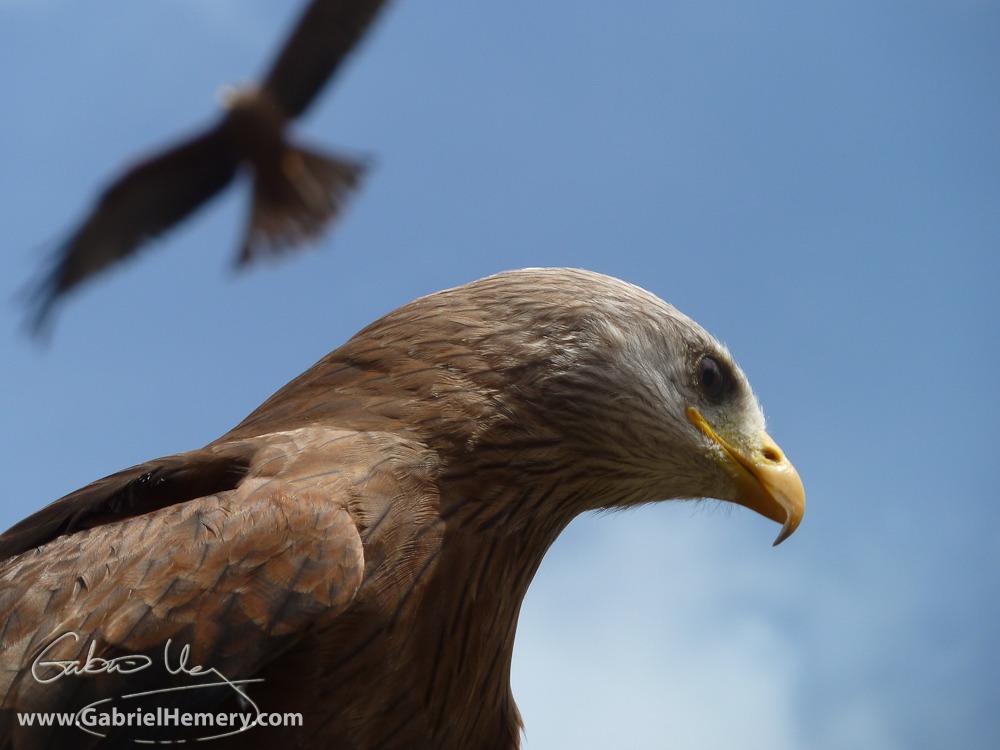In the early 1990s, when I was a student at the University of Wales Aberystwyth, I used to visit the town dump. Not to scavenge because I was flat broke (well not quite) but because it was the best, and actually one of the few, places in the UK where it was still possible to see red kites in the wild.

Red kites were once common throughout England and Wales; being one of the main scavengers in the streets of London. Even Shakespeare referred to London as “The city of kites and crows.” By the by the end of the 19th Century however they were driven to extinction in England by humans, while only a tiny population survived in the woodlands and valleys of Wales.
What are you thinking, my wild friend
As you claim supremacy of the summer sky?
What magic holds you there without a single flap
Of your gorgeous wings?Who dressed you today wondrous one,
In a rust coloured waistcoat and a starched white shirt?
Your taloned wings outstretched, embrace the sky
You truly are God’s work.Who are you nagging with that fishwife song?
They can hear you from Garreg Dan to Caban Coch.
Keep on calling my brave beloved, someone will come,
You cannot be the last Red Kite.
Written by Allen Williams
Between 1989 and 1994, red kites were imported from Spain and released into the Chilterns: a stunning protected landscape of rolling hills and beech woodlands only a few miles north of London. The introduction project was run by English Nature and the RSPB. The birds started breeding in the Chilterns woodlands in 1992 and the population has expanded massively to the surprise and delight of both naturalists and local people. Today there are over 300 breeding pairs in the area. I frequently enjoy walking in the beech woodlands of the Chilterns where large gathering of red kites provide a spectacular display.
So successful has been the introduction that since 1999, chicks have been taken from the Chilterns and used to re-introduce the red kite to other parts of the UK including Scotland and various locations in England (The Midlands, Yorkshire, Newcastle). In January 2006, the first wild red kite for about 150 years was seen on the streets of London (read more). The reintroduction of the red kite must be one of the greatest conservation success stories of the 20th Century.
Gabriel Hemery
 This work is licensed under a Creative Commons Attribution- NonCommercial- NoDerivs 3.0 United States License.
This work is licensed under a Creative Commons Attribution- NonCommercial- NoDerivs 3.0 United States License.

No worries. Welsh kites are also being used to re-populate Ireland, and 100 have been released in Co. Wicklow. Also perhaps of interest is that great spotted woodpeckers have finally re-colonised Ireland and are nesting after a very long absence, just as NPWS and CCW were considering re-introduction using Welsh woodpeckers – an indicator that Ireland forest’s have recovered sufficiently for woodland specialisits to return – see http://www.coillte.ie/aboutcoillte/news/article/view/coilltes-forests-home-to-the-great-spotted-woodpecker-again/
“chicks have been taken from the Chilterns and used to re-introduce the red kite to other parts of the UK including mid Wales” Are you sure about that? I see red kites every day in mid Wales, and they’re doing very well without any need for introductions, and are spreading into Shropshire and Herefordshire
Thank you for your comment. I agree that it was incorrect so I’ve updated the text. I’ve heard that they are spreading out from Wales too which is wonderful news. Many thanks
Gabriel
For the record the Red Kites have now moved of their own accord further North and can be regularly seen around the M40 between Junction 10, the Northampton bypass and Junction 13 for Leamington Spa.
Last summer I witnessed about 20 Red Kites flying enmasse along the edge of Charndon village in Buckinghamshire heading towards Marsh Gibbon. 3 remained to fly around the farm fields for a long while after. I took plenty of photo’s but unfortunately the lens I had was insufficient to capture them in any detail. By the time I had stopped and fitted the zoom lens they had moved further away from me. The best I got was some funny looks from the natives who were no-doubt concerned that I was some sort of land developer. Can’t think why.
For the record Charndon is near to the Calvert landfill site so that may be why they were there. There is also one of the BBOWT nature reserves, Calvert Jubilee, site according to the HS2 document listing all sites under threat in that area. It is where the old brick pits have been allowed to flood and these are now becoming roosts for a variety of wildlife.
Another regular haunt of the Red Kite seems to be around the Signal Box at Shepherds Furze Farm. I know because it is one of the locations I work at and I have seen the Red Kites there since around 2007/8. One at first but these days there seems to be a pair flying around.
Aberystwyth Town Dump was my first sight of a Red Kite too..
Then I became manager of a place called Hafod one of the last nesting sites. By then the Forestry Commission was helping to protect them.
The history was strange though, the hillsides of Hafod (a historic landscape), had been planted with rectangular conifer plantations. The forestry lobby / Forestry Commission was so powerful in the 70s than the Nature Conservancy Council had had to enter into leases to pay to protect the last ancient beeches in which the Kites nested, from the foresters who were threatening, at least theoretically, to fell them and plant conifers.
Wonderful Alec – perhaps we passed each other at the dump in times long past? I know Hafod Forest quite well too. I had not heard of the NCC having to lease the forest from the FC to protect the wildlife habitatin the 1970s! How times have changed …